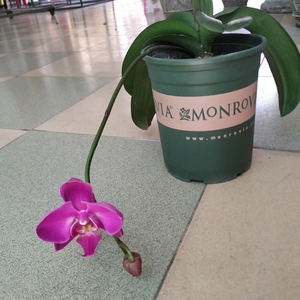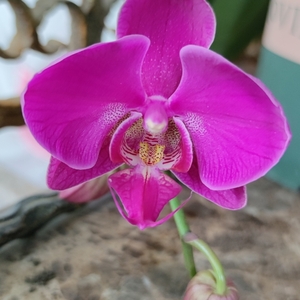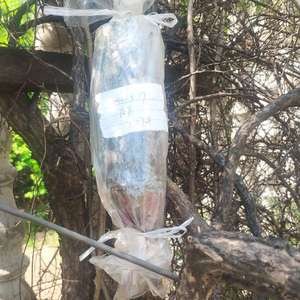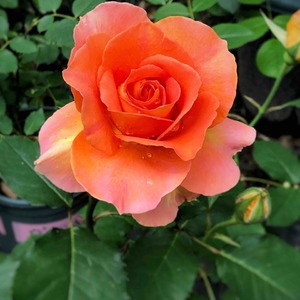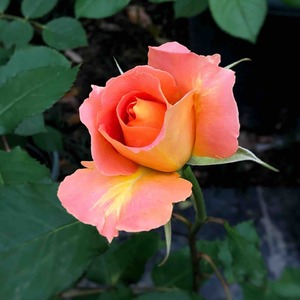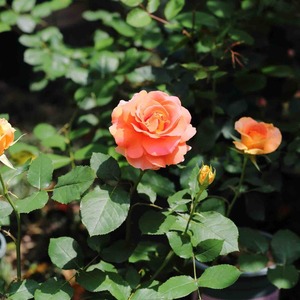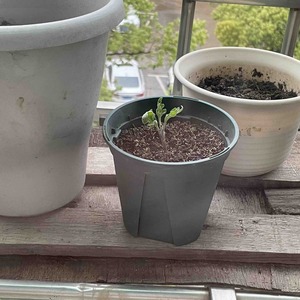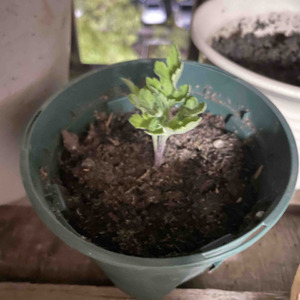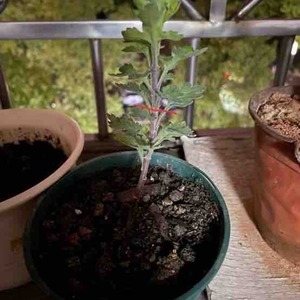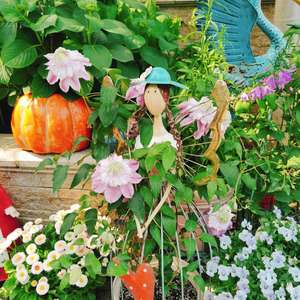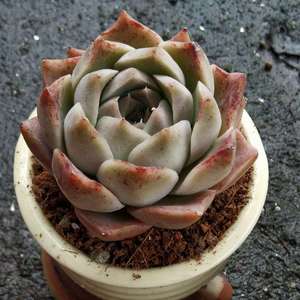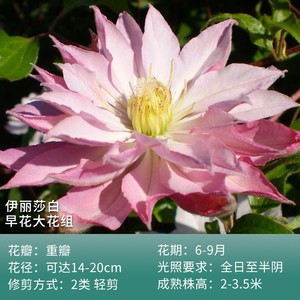文章
Miss Chen
2022年06月03日

The Cornelian cherry dogwood (Cornus mas) is a large multi-stemed deciduous shrub that is sometimes trained as a small tree. The growth habit is usually round or oval in shape. The green foliage is 2 to 4 inches long, presenting in an opposite leaf arrangement. As with other dogwoods, there is also opposite branching.
A winner of the Award of Garden Merit from the Royal Horticultural Society, this shrub features clusters of yellow flowers appearing at the end of winter or early spring, which then lead to edible red fruits. This is one of the earliest shrubs to bloom, with blossoms that unfurl before the leaves. The clusters of yellow flowers are similar in appearance to forsythia, and the red stone fruits (drupes) that ripen in July resemble olives in size and shape. They are used in European cuisine for drinks, syrups, preserves, jams, and sauces. They can be eaten fresh or dried, though they need to be fully ripe in order to lose some of their bitterness.
The leaves of cornelian cherry dogwood may develop some shades of reddish-purple in fall, though the display is not notable. The peeling, exfoliating brown bark adds some four-season interest to the plant. Cornelian cherry dogwood is a fairly slow-growing species that will take up to 10 years to achieve 15 feet in height. It is normally planted in the spring.
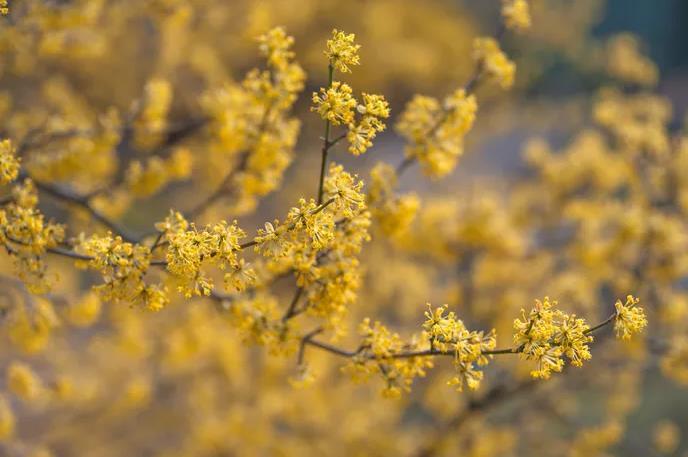
Botanical Name Cornus mas
Common Names Cornelian cherry dogwood, cornelian cherry, European cornel
Plant Type Deciduous shrub/ tree
Mature Size 15 to 25 feet tall; 15- to 20-foot spread
Sun Exposure Full sun to part shade
Soil Type Medium moisture, well-drained soil
Soil pH 5.0 to 8.0 (acidic to slightly alkaline)
Bloom Time March
Flower Color Yellow
Hardiness Zones 4 to 8 (USDA)
Native Area Southwestern Asia, Southern Europe
How to Grow Cornelian Cherry Dogwood
This shrub will grow suitably in almost any well-drained soil in a location that gets at least 4 hours of sunlight daily. Once established, it has a good tolerance for drought or occasional flooding, but will not survive constant soaking in dense soils.
The fruit, while tasty, has a large pit that makes it somewhat laborious to harvest and use in cooking. If you do grow this plant for the fruit, it's best to plant at least two shrubs. Cornelian cherry dogwood is somewhat self-fertile, but the results will be better if there are at least two shrubs to cross-pollinate.
The cornelian cherry dogwood can spread by suckers, so keep the plant in check by removing them promptly.
Light
This shrub prefers a location that offers full sun to part shade. It requires a bit more sun than most dogwoods—less than 4 hours of sun daily will lead to reduced flowering and fruit production.
Soil
Cornelian cherry dogwood is most happy with a well-drained rich soil that has a good amount of humus in it. It will fail to thrive in dense soils that remain constantly wet. While most dogwoods prefer slightly acidic soil, cornelian cherry dogwood can do fine even in slightly alkaline conditions.
Water
This plant has average water needs—it will thrive with about 1 inch of water per week in the form of rainfall and/or irrigation. Make sure the moisture penetrates the soil to a depth of about 6 inches. Once established, this type of dogwood is fairly resilient, bouncing back from being flooded during wet spells or parched during drought.
Temperature and Humidity
Rated for USDA zones 4 to 8, cornelian cherry dogwood will survive temperatures down to minus-25 or minus-30 degrees Fahrenheit.
Fertilizer
Like most dogwoods, cornelian cherry dogwood is best fertilized once in the early spring, then once about three months later. Use a balanced slow-release granular fertilizer mixed into the soil around the roots. If you have extremely alkaline soil, using an acidifying fertilizer may help.
Pruning Cornelian Cherry Dogwood
This shrub tends to form multiple leader stems, and to control the size you'll need to prune away suckers that appear. To train the plant as a small tree, select a main leader as a trunk, then systematically prune away competing shoots. This species also can be readily pruned to maintain as a hedge plant.
The best timing for hard pruning is immediately after the flowers have faded in spring, but be aware that you'll lose the fruits for that season.
Propagating Cornelian Cherry Dogwood
As with most dogwoods, cornelian cherry dogwood is most often propagated by taking stem cuttings and rooting them.
Snip 3- to 5-inch cuttings from the tips of green stems, then remove the bottom set of leaves. Cut the other leaves in half, but leave them on the cuttings. Dip the cut ends in a rooting compound, then plant the cuttings in small containers filled with a commercial seed-starter mix or a mixture of perlite and sand.
Place the planted cutting inside a large plastic bag, and place the pot in a bright, warm location. Check the cutting weekly to see if roots have developed (you will feel resistance when tugging on the cutting). When a good network of roots has developed (about 6 weeks), remove the plastic bag, and continue growing the new plant in a sunny window. Keep the potting mix moist. At the point where the cutting outgrows its first pot, you can repot it in a container filled with ordinary potting mix. When it outgrows this second pot, it is ready to plant in the landscape. This process may involve growing the rooted cutting indoors over the winter, then transplanting it outdoors the following spring.
Common Pests/ Diseases
When properly grown in the right conditions, this shrub has few disease or pest issues. While it is not immune to the dogwood anthracnose disease that plagues many types of dogwood, this species is decidedly more resistant to that disease.
The easy-care reputation is lost, though, if a cornelian cherry dogwood becomes unhealthy. Stressed plants can be susceptible to borers; and leaf miner, gall midge, and scale may also become more than just cosmetic problems.
Potential disease problems include leaf spot, crown canker, root rot, powdery mildew, and leaf blight. Here, too, it is stressed trees or those planted in less than ideal circumstances that are most vulnerable.
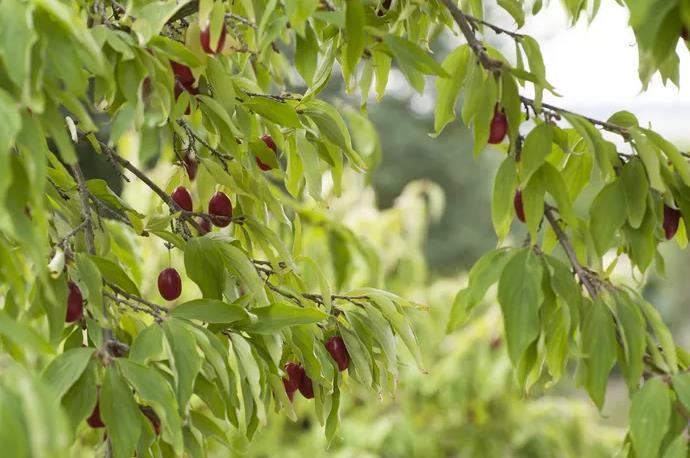
Varieties of Cornelian Cherry Dogwood
For a shrub with variegated leaves, choose the 'Variegata' or `Elegantissima' cultivars.
If you prefer golden leaves, look for 'Aurea'.
Try 'Nana' if you want a plant that only reaches about 3 feet tall.
For yellow fruit rather than red, plant 'Xanthocarpa' or 'Flava'
'Fructu Violaceo' produces purple fruits.
'Alba' has white fruits.
If you live in the Southern United States, 'Spring Glow' is an excellent choice to handle the conditions found there.
‘Golden Glory’ has extra-large flowers and large fruit, with a more upright branching growth habit.
Landscape Uses
Cornelian cherry dogwood is highly prized for its very early spring blooms. It works well as a hedge, screen, or foundation plant, or can be grouped with other shrubs species in a mixed border. It can also be trained as a small specimen tree. Juxtaposed against a dark green woodland background, the yellow blossoms pop with color.
This form of dogwood is a good choice if you want to lure birds, squirrels, and other animals to your garden, as they love the fruit.
A winner of the Award of Garden Merit from the Royal Horticultural Society, this shrub features clusters of yellow flowers appearing at the end of winter or early spring, which then lead to edible red fruits. This is one of the earliest shrubs to bloom, with blossoms that unfurl before the leaves. The clusters of yellow flowers are similar in appearance to forsythia, and the red stone fruits (drupes) that ripen in July resemble olives in size and shape. They are used in European cuisine for drinks, syrups, preserves, jams, and sauces. They can be eaten fresh or dried, though they need to be fully ripe in order to lose some of their bitterness.
The leaves of cornelian cherry dogwood may develop some shades of reddish-purple in fall, though the display is not notable. The peeling, exfoliating brown bark adds some four-season interest to the plant. Cornelian cherry dogwood is a fairly slow-growing species that will take up to 10 years to achieve 15 feet in height. It is normally planted in the spring.

Botanical Name Cornus mas
Common Names Cornelian cherry dogwood, cornelian cherry, European cornel
Plant Type Deciduous shrub/ tree
Mature Size 15 to 25 feet tall; 15- to 20-foot spread
Sun Exposure Full sun to part shade
Soil Type Medium moisture, well-drained soil
Soil pH 5.0 to 8.0 (acidic to slightly alkaline)
Bloom Time March
Flower Color Yellow
Hardiness Zones 4 to 8 (USDA)
Native Area Southwestern Asia, Southern Europe
How to Grow Cornelian Cherry Dogwood
This shrub will grow suitably in almost any well-drained soil in a location that gets at least 4 hours of sunlight daily. Once established, it has a good tolerance for drought or occasional flooding, but will not survive constant soaking in dense soils.
The fruit, while tasty, has a large pit that makes it somewhat laborious to harvest and use in cooking. If you do grow this plant for the fruit, it's best to plant at least two shrubs. Cornelian cherry dogwood is somewhat self-fertile, but the results will be better if there are at least two shrubs to cross-pollinate.
The cornelian cherry dogwood can spread by suckers, so keep the plant in check by removing them promptly.
Light
This shrub prefers a location that offers full sun to part shade. It requires a bit more sun than most dogwoods—less than 4 hours of sun daily will lead to reduced flowering and fruit production.
Soil
Cornelian cherry dogwood is most happy with a well-drained rich soil that has a good amount of humus in it. It will fail to thrive in dense soils that remain constantly wet. While most dogwoods prefer slightly acidic soil, cornelian cherry dogwood can do fine even in slightly alkaline conditions.
Water
This plant has average water needs—it will thrive with about 1 inch of water per week in the form of rainfall and/or irrigation. Make sure the moisture penetrates the soil to a depth of about 6 inches. Once established, this type of dogwood is fairly resilient, bouncing back from being flooded during wet spells or parched during drought.
Temperature and Humidity
Rated for USDA zones 4 to 8, cornelian cherry dogwood will survive temperatures down to minus-25 or minus-30 degrees Fahrenheit.
Fertilizer
Like most dogwoods, cornelian cherry dogwood is best fertilized once in the early spring, then once about three months later. Use a balanced slow-release granular fertilizer mixed into the soil around the roots. If you have extremely alkaline soil, using an acidifying fertilizer may help.
Pruning Cornelian Cherry Dogwood
This shrub tends to form multiple leader stems, and to control the size you'll need to prune away suckers that appear. To train the plant as a small tree, select a main leader as a trunk, then systematically prune away competing shoots. This species also can be readily pruned to maintain as a hedge plant.
The best timing for hard pruning is immediately after the flowers have faded in spring, but be aware that you'll lose the fruits for that season.
Propagating Cornelian Cherry Dogwood
As with most dogwoods, cornelian cherry dogwood is most often propagated by taking stem cuttings and rooting them.
Snip 3- to 5-inch cuttings from the tips of green stems, then remove the bottom set of leaves. Cut the other leaves in half, but leave them on the cuttings. Dip the cut ends in a rooting compound, then plant the cuttings in small containers filled with a commercial seed-starter mix or a mixture of perlite and sand.
Place the planted cutting inside a large plastic bag, and place the pot in a bright, warm location. Check the cutting weekly to see if roots have developed (you will feel resistance when tugging on the cutting). When a good network of roots has developed (about 6 weeks), remove the plastic bag, and continue growing the new plant in a sunny window. Keep the potting mix moist. At the point where the cutting outgrows its first pot, you can repot it in a container filled with ordinary potting mix. When it outgrows this second pot, it is ready to plant in the landscape. This process may involve growing the rooted cutting indoors over the winter, then transplanting it outdoors the following spring.
Common Pests/ Diseases
When properly grown in the right conditions, this shrub has few disease or pest issues. While it is not immune to the dogwood anthracnose disease that plagues many types of dogwood, this species is decidedly more resistant to that disease.
The easy-care reputation is lost, though, if a cornelian cherry dogwood becomes unhealthy. Stressed plants can be susceptible to borers; and leaf miner, gall midge, and scale may also become more than just cosmetic problems.
Potential disease problems include leaf spot, crown canker, root rot, powdery mildew, and leaf blight. Here, too, it is stressed trees or those planted in less than ideal circumstances that are most vulnerable.

Varieties of Cornelian Cherry Dogwood
For a shrub with variegated leaves, choose the 'Variegata' or `Elegantissima' cultivars.
If you prefer golden leaves, look for 'Aurea'.
Try 'Nana' if you want a plant that only reaches about 3 feet tall.
For yellow fruit rather than red, plant 'Xanthocarpa' or 'Flava'
'Fructu Violaceo' produces purple fruits.
'Alba' has white fruits.
If you live in the Southern United States, 'Spring Glow' is an excellent choice to handle the conditions found there.
‘Golden Glory’ has extra-large flowers and large fruit, with a more upright branching growth habit.
Landscape Uses
Cornelian cherry dogwood is highly prized for its very early spring blooms. It works well as a hedge, screen, or foundation plant, or can be grouped with other shrubs species in a mixed border. It can also be trained as a small specimen tree. Juxtaposed against a dark green woodland background, the yellow blossoms pop with color.
This form of dogwood is a good choice if you want to lure birds, squirrels, and other animals to your garden, as they love the fruit.
0
0
成长记
嘉多宝
2022年04月25日

修剪之后原盆状态一直不太好,近期慢慢稳定了,也是向阳一边倒了(图1)……剪下来的一堆水培的还不错(图2),另外土培的只剩一棵光杆司令了,因为不怎么见光,颜色也不好了……(图3)
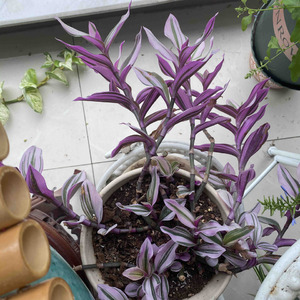

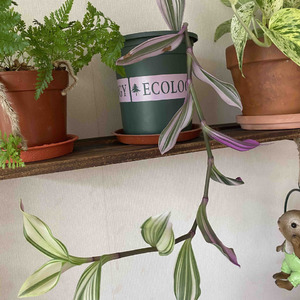



0
0



